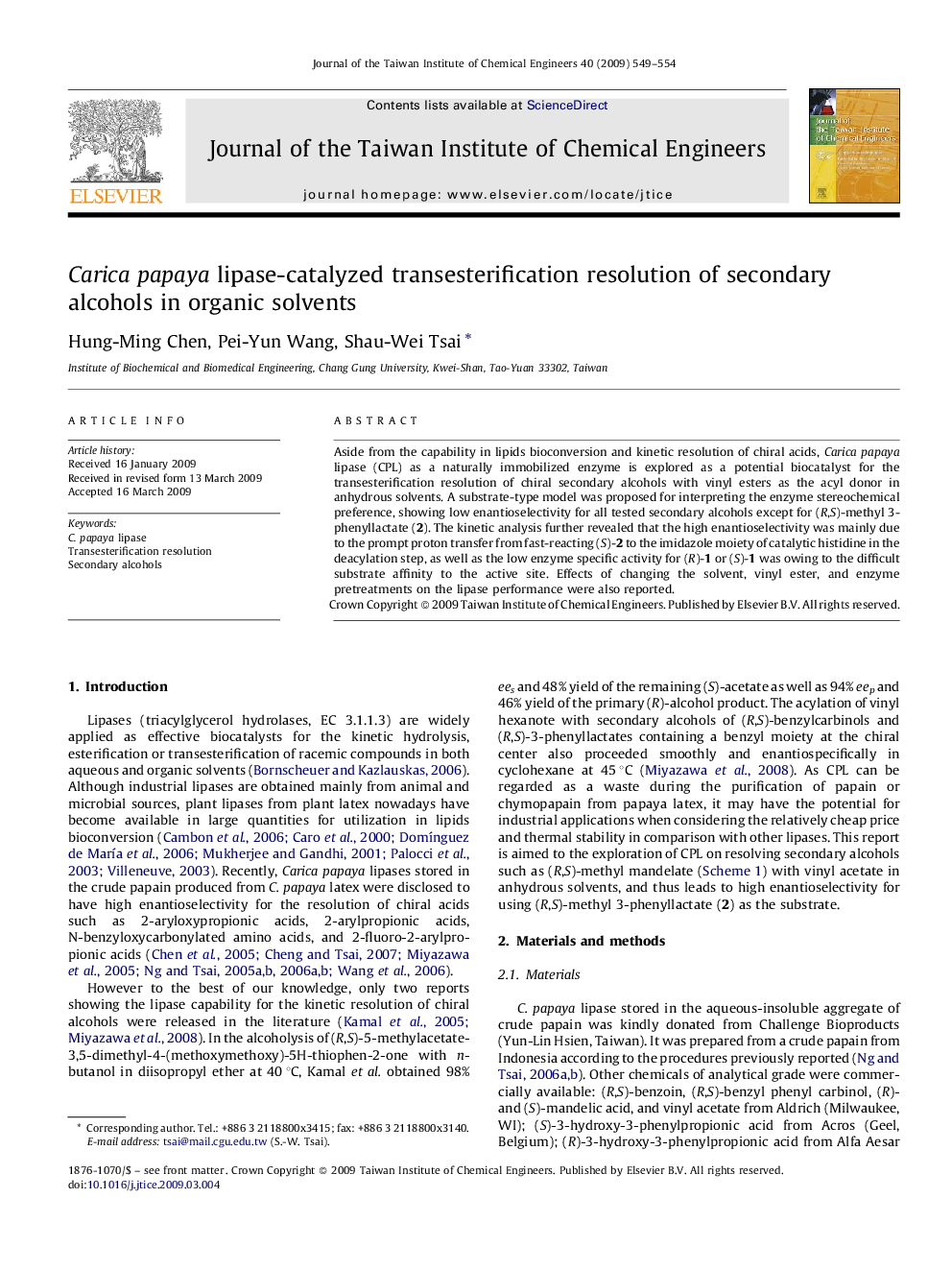| کد مقاله | کد نشریه | سال انتشار | مقاله انگلیسی | نسخه تمام متن |
|---|---|---|---|---|
| 691959 | 1460460 | 2009 | 6 صفحه PDF | دانلود رایگان |

Aside from the capability in lipids bioconversion and kinetic resolution of chiral acids, Carica papaya lipase (CPL) as a naturally immobilized enzyme is explored as a potential biocatalyst for the transesterification resolution of chiral secondary alcohols with vinyl esters as the acyl donor in anhydrous solvents. A substrate-type model was proposed for interpreting the enzyme stereochemical preference, showing low enantioselectivity for all tested secondary alcohols except for (R,S)-methyl 3-phenyllactate (2). The kinetic analysis further revealed that the high enantioselectivity was mainly due to the prompt proton transfer from fast-reacting (S)-2 to the imidazole moiety of catalytic histidine in the deacylation step, as well as the low enzyme specific activity for (R)-1 or (S)-1 was owing to the difficult substrate affinity to the active site. Effects of changing the solvent, vinyl ester, and enzyme pretreatments on the lipase performance were also reported.
Journal: Journal of the Taiwan Institute of Chemical Engineers - Volume 40, Issue 5, September 2009, Pages 549–554